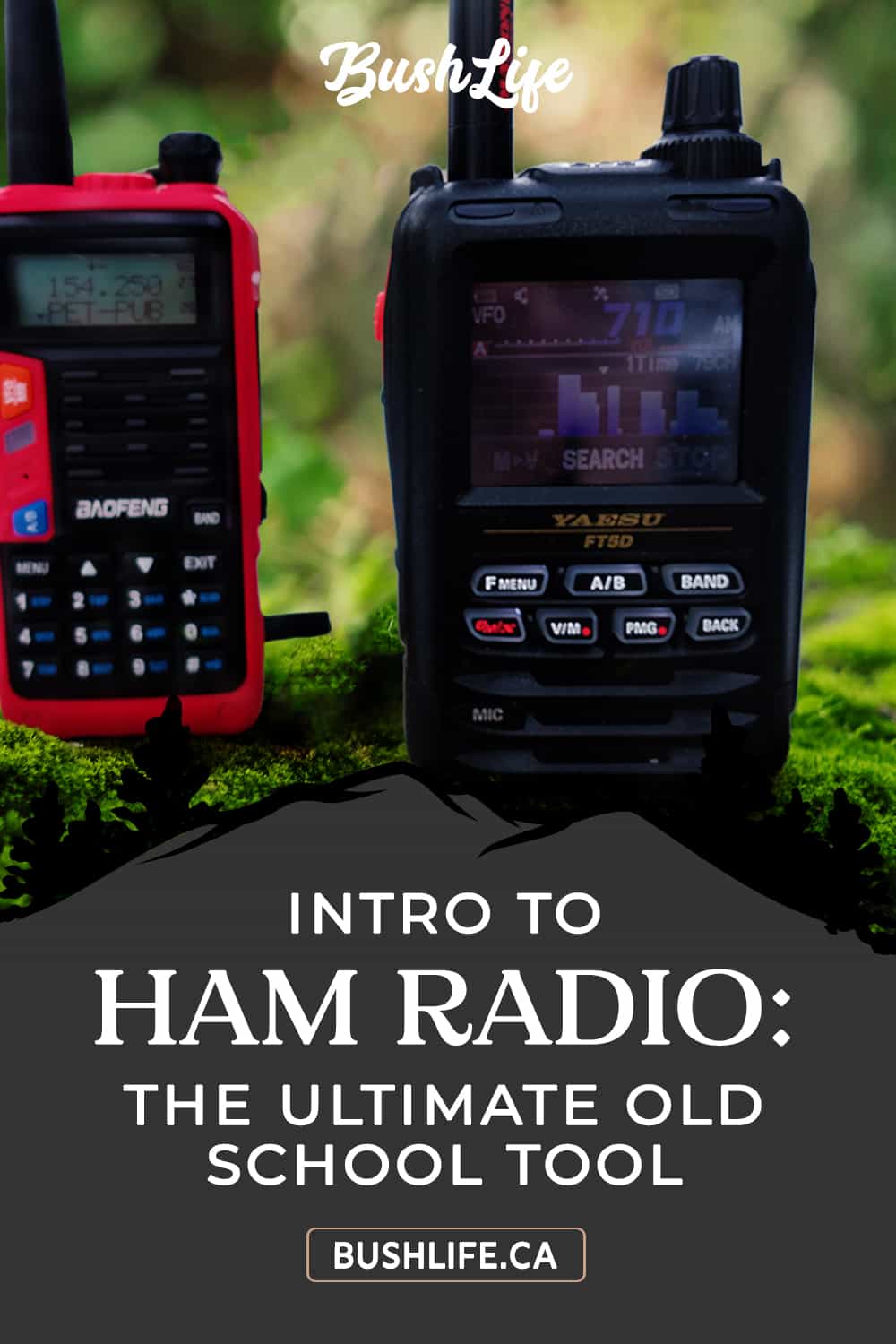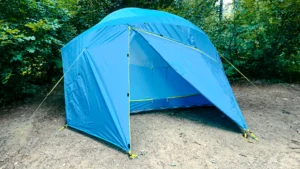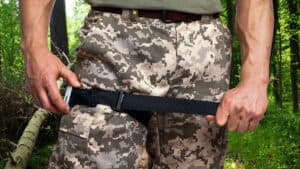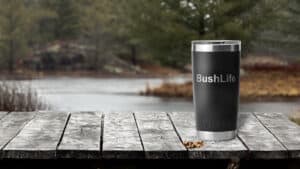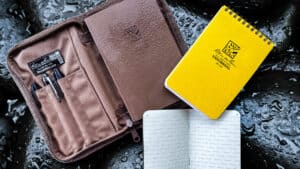In Intro to Ham Radio, we will cover radio in general, the specifics of ham radio, how to get into it and why you may need one. If you are reading this blog, it’s because you like the outdoors, whether it’s fishing, hunting, ATVing, etc. A lot of these activities can benefit from having comms (communication).
While my blog is not about prepping, I will always talk about safety, survival, gear, etc. In a way, you could say there is a prepping element to it – or perhaps there is some overlap. What I can tell you for certain is that the prepper community loves these radios! And for good reason. So, let’s get started with an intro to ham radio.
Discloure: Posts may contain affiliate links. Purchases made through our links result in a small commission to us at no charge to you. We only recommend products that meet our brand standards based on testing and first hand use by our authors.
- Making Your Intro to Ham Radio EASY
- The Electromagnetic Spectrum
- The Walkie Talkie, CB Radio
- Ham Radio
- Choose Your Path for Your Intro to Ham Radio
- Amateur Radio Resources in Canada and the USA
- What Ham Radio Should I Get
- A Little About Ham Radio Bands
- The Repeater
- Calling Frequencies
- Programming Your Ham Radio
- Get a Better Ham Radio Antenna!
- Digital vs Analog Ham Radios
- Back to Repeaters
- The HF Band – The Holy Grail
- Where Ham Radio License Course
- What Ham Radio License Do I Need?
- Intro to Ham Radio Conclusion
Making Your Intro to Ham Radio EASY
There is an overabundance of ham info or videos circulating the web, most of which delve far deeper into the hobby and are immediately over your head – don’t waste your time on them, not yet. The problem is that entering the ham radio world is almost like entering the gates of geekdom with technical jargon that is very foreign to anyone outside that world, even for someone technical like myself.
Don’t get me wrong, the people in this community are tremendous, polite and very helpful. It just comes with an insane learning curve to get started. It also posses an unintended barrier to entry into the hobby. To further complicate matters, there are very few places, if any, where you can walk in and have a person-to-person conversation about it. Therefore, we have condensed the subject into what you need to know, in the order you need to know it and in plain English!
The Electromagnetic Spectrum
Without too much geek speak, let’s briefly go back to high school science. Electromagnetic radiation is the flow of energy in the form of electromagnetic waves. This can mean infrared heat from the sun, visible light, microwave ovens, x-rays, and, you guessed it, radio waves! The graphic below will help illustrate this.

Electromagnetic Waves
These waves come in different frequencies and wavelengths. From above, you’ll see the frequency is inverse in relationship to the wavelength. In other words, as the wavelength gets smaller the frequency gets bigger. Remember this as it’s very important for radio. The graphic below will help illustrate the idea of wavelength and that frequency is simply the number of waves in a given amount of time.
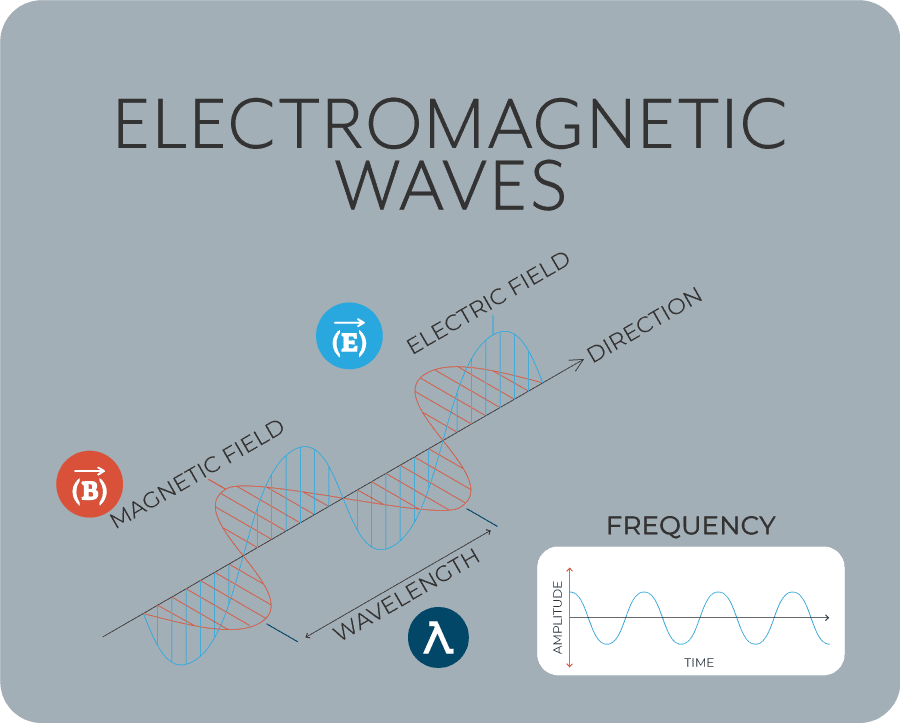
Control and Order
Radio waves are used for broadcasting not only audio but also TV amongst several other things. As you would imagine, a lot is going on out there with limited bandwidth. So the use of these radio frequencies is then sub-segmented or, in other words, allocated by governments – there is control and order as to what frequencies we use, for what and where.
Before I end the geek speak, I’ll give you one last graphic below about light. It’s too cool to pass up the opportunity that the very thing we are talking about for radios also applies to visible light. Even the very colours we see!

The Walkie Talkie, CB Radio
We all know of comms out there that don’t require a license. Nor do they require much knowledge to operate, so let’s quickly look at them before addressing ham radios.
Walkie-Talkie
The Walmart or Canadian Tire-type packaged walkie-talkies run on a segment of radio called FRS (Family Radio Service). Walkie-talkies are handy for talking to the kids or for use on an ATV trip with a group of people very close by.
This segment only allows low-power broadcasting (max 2 watts), and they have very limited range. DO NOT believe the package when it says 50 km and so on. That is a joke and might be true if one was on top of a mountain with a clear & unimpeded line of sight to the other radio. Realistically, you might get a kilometre, which is what I get out in the country where all we need to penetrate are trees. Going across flat, open areas like a lake is supposed to help, but I’ve tested that and am not impressed.
FRS, by the way, is based on FM (Frequency Modulation), so going back to the science above, we can look up FRS and see that there are frequencies around 462 MHz reserved for FRS. Interestingly, it can be heard on several ham radios as it is UHF. It can even be broadcasted to by some ham equipment, but not legally.
CB (Citizens Band)
We all know that truckers use CBs. They run around 26 and 27 Mhz using AM (Amplitude Modulation), and generally, it means different equipment than ham radio. Although, I have a handheld unit that I can listen on.
CB uses a band of radio that has a longer wavelength, which means it travels farther. That added range is, of course, at the expense of requiring a larger antenna. With radio in general, the longer the wavelength, the longer the antenna has to be. CB also has a higher wattage cap than FRS at 4 watts. All in all, however, CB still has a fairly short useable range.
CB is out of context for this post as there is no real use in the bush or for broader emergencies.
Ham Radio
Ham radio is amateur radio and is regulated heavily by governments. You do not need a license to listen on a ham radio, but you do require one to broadcast. It begs the question as to why it’s amateur. The simple answer is that it’s not intended for commercial broadcasts.
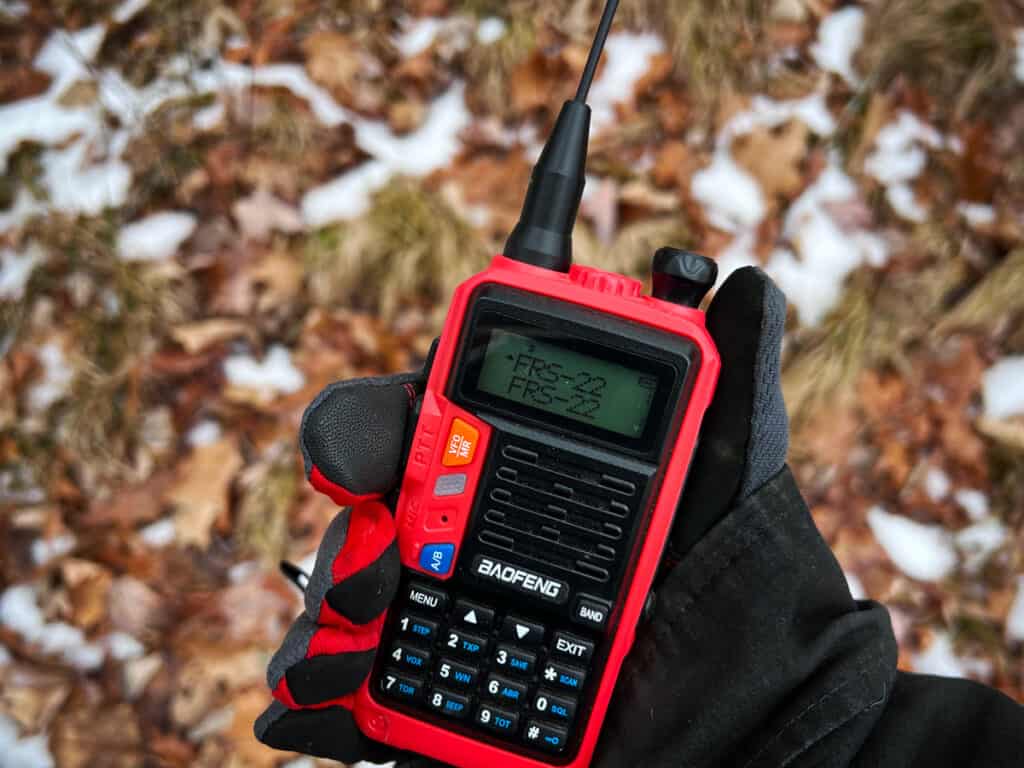
Ham Radio Licensing Process
Here is where my intro to ham radio post gets interesting. Those licensed will say that the ham radio licensing process is easy. Unfortunately, a lot of preparation is required to write the test to become licensed.
For the test, you require an understanding of how radios work (Ie. electronics theory), antennas, laws regarding the use of these radios and so on. There are courses like Ham Radio Prep, several books and online practice tests to aid in the licensing process.
You may be asking why you are reading about this. The answer is simple – in an emergency, I mean a life-threatening emergency and other comms are not available to you, you are permitted to get on Ham and seek assistance without a license. That is very attractive in the backcountry where cell signals are hit or miss. Or when stranded in a car during winter. It also makes Ham immediately relevant to everyone, as most of us only have a cell phone and no backup plan.
Choose Your Path for Your Intro to Ham Radio
If you are asking, so now what? You have a couple of options here with your intro to ham radio. If these amateur radios interest you, I will give you a link (a little farther down) where you can purchase one. I will also show you some basic programming, and you’ll have an extra lifeline for your backpack.
I highly suggest you listen, learn and practice using the radio (without broadcasting), as it’s not the type of thing you want to figure out when you need it most.
Your second path into the world of ham radio is very similar. You do what I mentioned above, but you find that the hobby of amateur radio now interests you. At this point, google your local ham radio club, reach out to them and see what resources they have to help you.
Amateur Radio Resources in Canada and the USA
Another excellent place to start in Canada is rac.ca (Radio Amateurs of Canada), where you can find courses and study guides. In the US, you can visit arrl.org (National Association for Amateur Radio). Millions of people worldwide are into amateur radio, many if not most of them for sheer enjoyment. The amount of resources available is endless.
I took the path of buying some amateur radios and testing the waters for my own interest level. While learning how to use a ham radio, I knew I had just secured a very valuable communication tool for my outdoor adventures. As a bonus, these radios have secured me some long-range comms for the bad times such as SHTF, disasters, power outages, and so on, which I’ll explain a little further down.
What Ham Radio Should I Get
Oh boy, this is like picking a car for someone who has never driven, so let’s start with a process of elimination. Forget the base stations, vehicle versions or anything not super portable or requiring an external power source. Let’s also not look at anything over $100.
That makes things a lot easier and takes us to a Chinese radio made by Baofeng. For what you pay, the Baofengs are good budget radios and more than enough to enter the hobby. Since you’ll eventually want a few radios in the arsenal, even if you go big, the Baofeng will always have its place.
Baofeng UV-5R
The Baofeng UV-5R is the standard, most used, most known Baofeng out there. After looking for a few weeks, I found a used one on my local Facebook marketplace. I also had to drive an hour one way to get it, which gives you an idea of exactly how scarce radios are right now. Luckily, the link above showed up on Amazon, which should make things a lot easier for you, in terms of securing your first radio.
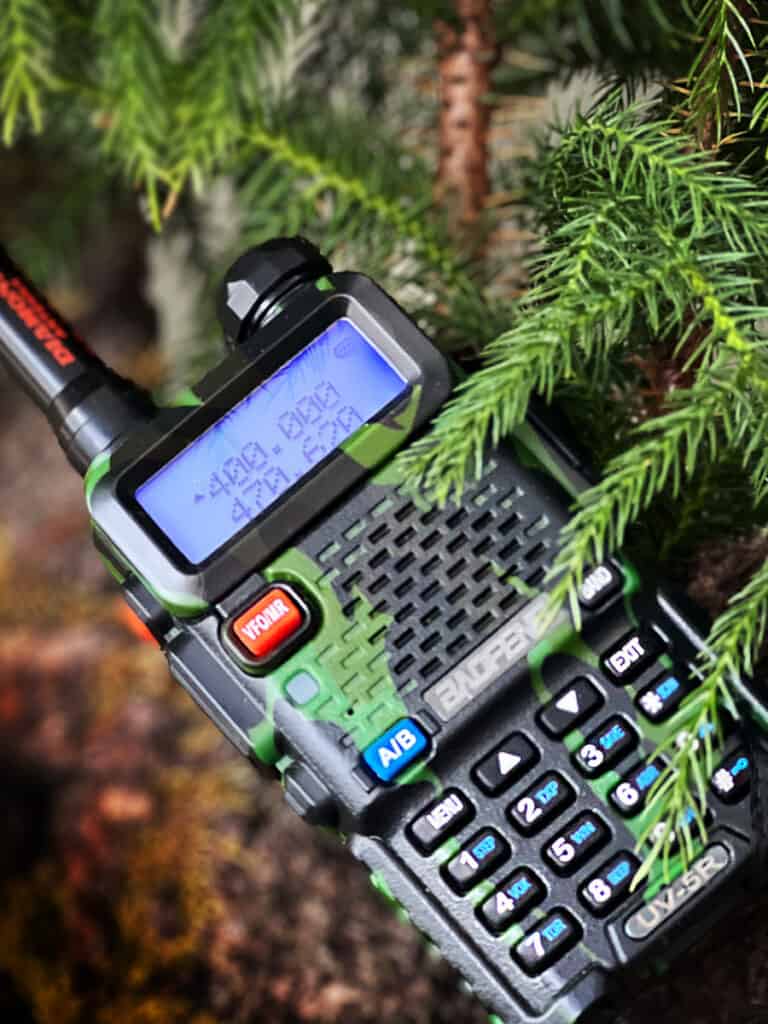
I advise you to get a cheap radio like the Baofeng UV-5R and start by programming it and listening. Without it, you have no idea what you are getting into and what kind of chatter is in your area. Again, just don’t broadcast without that license or in the absence of an emergency.
A Little About Ham Radio Bands
We need a little more geek speak. I mentioned wavelength and frequency up top. Wavelength will determine the “band”, in which your radio needs to operate. There are several bands of ham radio, but for our purpose today, we will only cover VHF (Very High Frequency) and UHF (Ultra High Frequency). These are quite common terms you may have heard of before.
VHF vs. UHF
| VHF | UHF |
|---|---|
| 2 meter long wavelength | 70 cm long wavelength |
| Ranges in frequency from 30 – 300 Mhz | Ranges from 300 Mhz – 3 Ghz |
| Allowable amateur radio use of 144 – 148 Mhz | Allowable amateur radio use of 430 – 440 Mhz |
| Better for distance | Shorter wavelength penetrates objects or buidlings better but at the expense of range |
Why These Bands for Ham Radio?
These bands don’t require massive antennas, which suits the purpose of using an HT (Handheld Transceiver) or handheld radio. Similar-sized antennas to those used on walkie-talkies will get you by and make entry into the hobby much easier.
In other words, you aren’t writing cheques for someone to erect a big tower on your house, nor are you calculating the correct resonant lengths of wire for certain frequencies and stringing out your backyard. It also supports our discussion for BushLife in terms of mobility.
Unlike walkie-talkies, we typically have 5 watts of power at our disposal versus 2 watts, and we are not running on narrowband FM like FRS. So, our range is substantially better right out of the box. The big kicker is we are now running more professional equipment with the option to use several different antennas – in addition to not being locked into a very small group of channels like FRS.
The Repeater
Up until now, I have only talked about simplex communication. This is simple communication from one unit to another on the same frequency. I’ve just been warming up to what is next, which is the repeater. The repeater is what makes ham radio so powerful.
A repeater is usually a big antenna, preferably high up on a tower. It also comes with very powerful equipment pushing 100, 250, and 500 up to 1500 watts. The range is now more like 75 km as it re-broadcasts what it hears, which can be you. This substantially and fundamentally changes the available use and power of ham radio, but it does come with a few minor complications.
To hear a repeater, you need to tune into a specific frequency to receive or hear its broadcasts. Simple so far. You also need to simultaneously tune to transmit on a different frequency to transmit or broadcast your message to the repeater, hence the term duplex.
It is done this way because everyone is listening to the frequency the repeater transmits on and not the frequency you use to send your message to the repeater. Obviously, with a lot bigger and better equipment, the repeater is capable of receiving and then re-transmitting your (and everyone else’s) broadcasts with a much better signal than what you would get if you were all talking on simplex from one unit to another.
A Few More Amateur Radio Terms to Know
Offset
Offset is the difference between a repeater’s transmit and receive frequencies. It is stated as + or – as it is a measure of deviation from the repeater’s transmit frequency. Confused, don’t worry, I’ll have an example below.
Squelch
By definition, a squelch is a circuit that suppresses the output of a radio receiver if the signal strength falls below a certain threshold. Remember this as you’ll need it for radio in general. Squelch can be adjusted on almost all radios, and it’s usually used to filter out noise. I bring it up mainly for the next item.
CTCSS or PL Tone
Repeaters either don’t use tones or they use a very specific tone in the broadcast, which is required to open the squelch. Again, don’t worry we’ll cover it in the example a little farther below.
Why Do I Need to Know These Terms?
There will be a LOT more terms for you to learn with your intro to ham radio. With a duplex, you simply need to understand these items to program your radio to talk to repeaters – and trust me, you are going to want to tap into repeaters right away.
Where Can I Find Repeaters In My Area
Once you get your first radio, google what simplex and duplex frequencies are active in your area. This could be repeaters, other hams, public service, fire, police, air, rail, marine, weather, commercial businesses, etc. You’ll notice as you go that repeaters are heavily in use.
A great online source to find this info for free is:
Repeater Book
Radio Reference
Here is The Example I Promised

The graphic above contains the typical info you’ll find when searching for a repeater. The above is from repeaterbook.com, with a snapshot of some records for a search in Ontario. Let’s use the last entry as an example, and I’ll speak in the context of programming your radio using computer software called Chirp.
- 145.1300 goes in the frequency column
- VA3GTU, the call sign would go in the name column for reference purposes
- Under tone mode I would select “tone” in the dropdown list
- Select 103.5, again from a dropdown list
- Under duplex, select –
- Under offset input “0.6”
If using software other than Chirp, things will look different. For example, my Yaesu uses its software. I could input 145.1300 in the receive column and 144.53 in the transmit column for the example above – only this time, I calculated the transmit frequency by subtracting 0.6 Mhz from 145.1300. The result is always the same. We just need to tell our radios the basic information they need to communicate.
Using the example from above, you have learned how to add your first repeater to your radio! It’s a PITA at first, but it gets better as you go. You now have to transfer it to the radio, which we’ll cover below.
Calling Frequencies
You will also want to add the national calling frequencies which are:
146.520 for VHF
446.000 for UHF
These are simplex frequencies you would use to call out and see if you can make contact with someone. Out of etiquette, keep it brief and move to an agreed-upon different frequency should you carry on the conversation.
Programming Your Ham Radio
Each radio manufacturer has their programming software, and you know what that means: Different menus, settings and even different terms, which can be overwhelming and confusing.
I mentioned Chirp above, which is simple software and comes with many pre-programmed channels to import, such as weather, marine VHF, FRS, and so on. Chirp works with several different ham radios, and if you go with the Baofeng above, you guessed it, you’re in luck! Chirp is a free download.
You will also need a Baofeng programming cable as it does not come with the radio. Once you get that cable, you need USB drivers, which can be quirky. I got mine from Miklor, and it is also a free download.
After installing the drivers and plugging in the cable, check the device manager to confirm there is no unrecognized hardware floating around. Then go into ports and see what number is assigned – which you’ll need to set and match in Chirp.
I should also mention that it’s infinitely easier to program your radio on the computer and transfer using the programming cable than it is trying to program on the radio. While you can directly program on the radio, trust me and get yourself a cable when buying the radio!
Still, Need Help Programming Your Baofeng
Don’t worry – there are many programming videos available to you! Out of everything I found on YouTube, I like Ham Radio Crash Course. He has some great content, and he explains things very clearly. This particular video below is excellent at setting and using the radio.
This next video from the same channel is excellent on programming it with Chirp.
Get a Better Ham Radio Antenna!
Yes, I know I said the walkie-talkie-style antenna that comes with the radio will get you by. While that is true, the fastest, cheapest, single thing you can do to improve your experience is to get a better antenna. A great antenna with an inexpensive radio will always beat an expensive radio with a cheap antenna. It’s sort of like the relationship between an electric guitar and its amplifier, you can’t have one without the other.
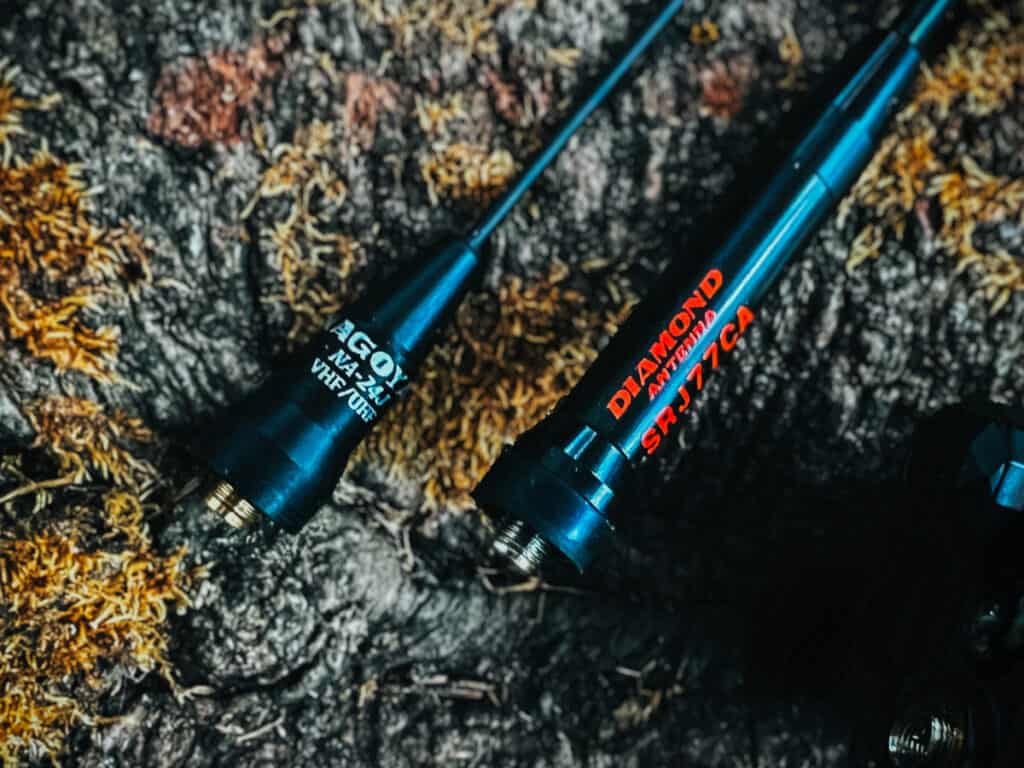
Where I am, there is a commercial FM radio station that barely comes in on any radio. On the Baofeng UV-5R with stock antenna, it’s at least audible but fuzzy. With the upgraded whip antenna from Diamond, it’s crystal clear. The antenna I speak of is model SRJ77CA. I can’t find it online economically, but I did find a similar antenna by Nagoya. I’ve since bought the Nagoya antenna and can confirm it works just as well as the Diamond. Both manufacturers are very reputable and heavily used in the hobby.
We’re not talking about a behemoth antenna here, which makes it very reasonable in size for portable comms. Nor is it expensive.
Digital vs Analog Ham Radios
Up until this point, I have only addressed analog. Analog is your old-school ham radio and is still in use on at least 90% of the repeaters. That is a guess, to be honest, and based on the folks from the radio store who seem to know their stuff.
Analog is still the gold standard and partly why preppers love these radios. When times get bad, such as after a disaster, governments have turned to ham radio operators to get messages out or communicate with areas that have no power, no internet and often even no physical access. It would be up to local HAMs to run the generators that power their equipment, but you can quickly see how much less it takes to get HAM up and running versus broader infrastructure. It takes substantially more coordinated efforts to get internet and cell towers back online, especially when there is major damage to infrastructure such as power, phone and internet trunk lines.
Digital has entered the HAM world. Unfortunately, with emerging technology (remember VHS versus BETA when movies were on tape or Sirius vs XM for the younger crowd), there come different standards or formats until one is dominant. While I’m not sophisticated enough on digital to talk about it in detail, I can tell you there are about 5-6 major formats that do not talk to each other and confuses things.
Back to Repeaters
Here’s the good news. Even on analog, one could bounce from one repeater to the next and talk over a very long distance. It’s not easy to do, but it is possible and a nice insurance policy for bad times.
During the good times, digital repeaters are fundamentally changing things. For someone talking to a local repeater (with an internet connection), they can talk to anyone in the world who is on the same format as a digital repeater. This takes an old-school style comm completely global and it drastically simplifies the process.
I may write about digital later, but it’s really not in the context of this post. I can assure you it’s not something you need to worry about right now, and while it simplifies long-range comms, there’s yet another big learning curve to start. Analog is alive and well and by far the best way for you to start in the hobby.
The HF Band – The Holy Grail
I have to cover this before I let you go, or it’s not an intro to ham radio. HF is the whole grail of HAM as its longer wavelengths and the fact that you can bounce signals off the Earth’s atmosphere opens up the doors to very LONG distances, like 3,000 miles! Everyone I talk to in the hobby is going on and on about it, and it’s making a big comeback.
I’ve been watching David Canterbury for a while now. He is a survival bushcraft expert on YouTube and puts out some interesting stuff. Oddly, he too recently got into HAM and happens to like the Ham Radio Crash Course channel. Anyway, for someone fairly new and learning himself, he put out a video the other day where he threw a wire into a tree, tuned it quickly with an antenna tuner and hooked it up to equipment running at only 5 watts. I believe he was in the northeast US, and he managed to easily get a signal out to Cuba from his location somewhere out in the bush. If anything, he had a difficult time getting a signal out closer to him than farther.
You need bigger and better antennas, equipment and knowledge to get into HF. I bring it up as something to look forward to if you choose to keep going down the path into radio. In a connected online world, it’s mind-blowing how far you can communicate using old-school ideas and using only your equipment that relies on ZERO outside services to function. Think about it – you can talk to Australia from California with nothing but a radio and a long piece of wire as an antenna between you and the other person!
Where Ham Radio License Course
Are you interested in obtaining a license? Ham Radio Prep offers easy-to-understand courses to help prepare you for your amateur radio license exam.
What’s pretty cool about this program is that Ham Radio Prep guarantees you will pass your exam on the first try. If not, they will refund your money and pay your exam fee, provided you put in the effort.
With an All Access Pass, Ham Radio Prep includes an entry-level Baofeng Basics course. This course will teach you how to use your Baofeng Radio to get on the air and make your first connection. It beats you trying to decipher complicated manuals and saves you time and frustration!
What Ham Radio License Do I Need?
There are three levels of licenses that you can obtain:
- A Technician License enables you to have access to VHF / UHF.
- The General License gives you access to many nationwide and worldwide HF bands.
- And lastly, the Amateur Extra License is the highest amateur class license offered by the FCC.
Intro to Ham Radio Conclusion
I know this was a big post! Hopefully, it was not too painful - the point is to take the pain away. Radios, however, are worth the time and effort. It can save you in times of trouble and, in the meantime, keep you connected to like-minded individuals globally.
Thanks for reading my Intro to Ham Radio post. As always, don't forget to like and follow us on our social channels. Until the next post, go out and have some fun with an amateur radio!
Bookmark this post on Pinterest for future reference!
